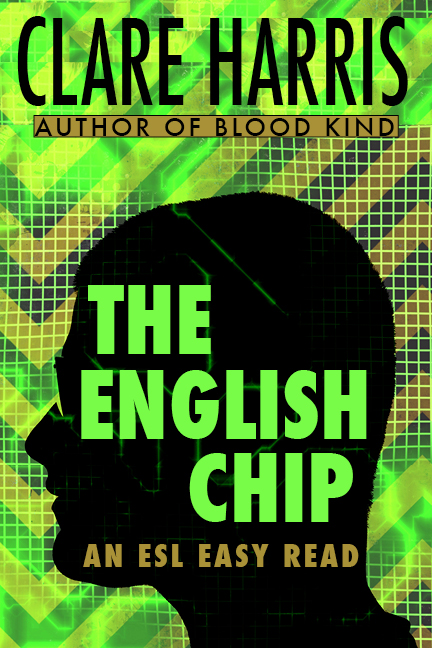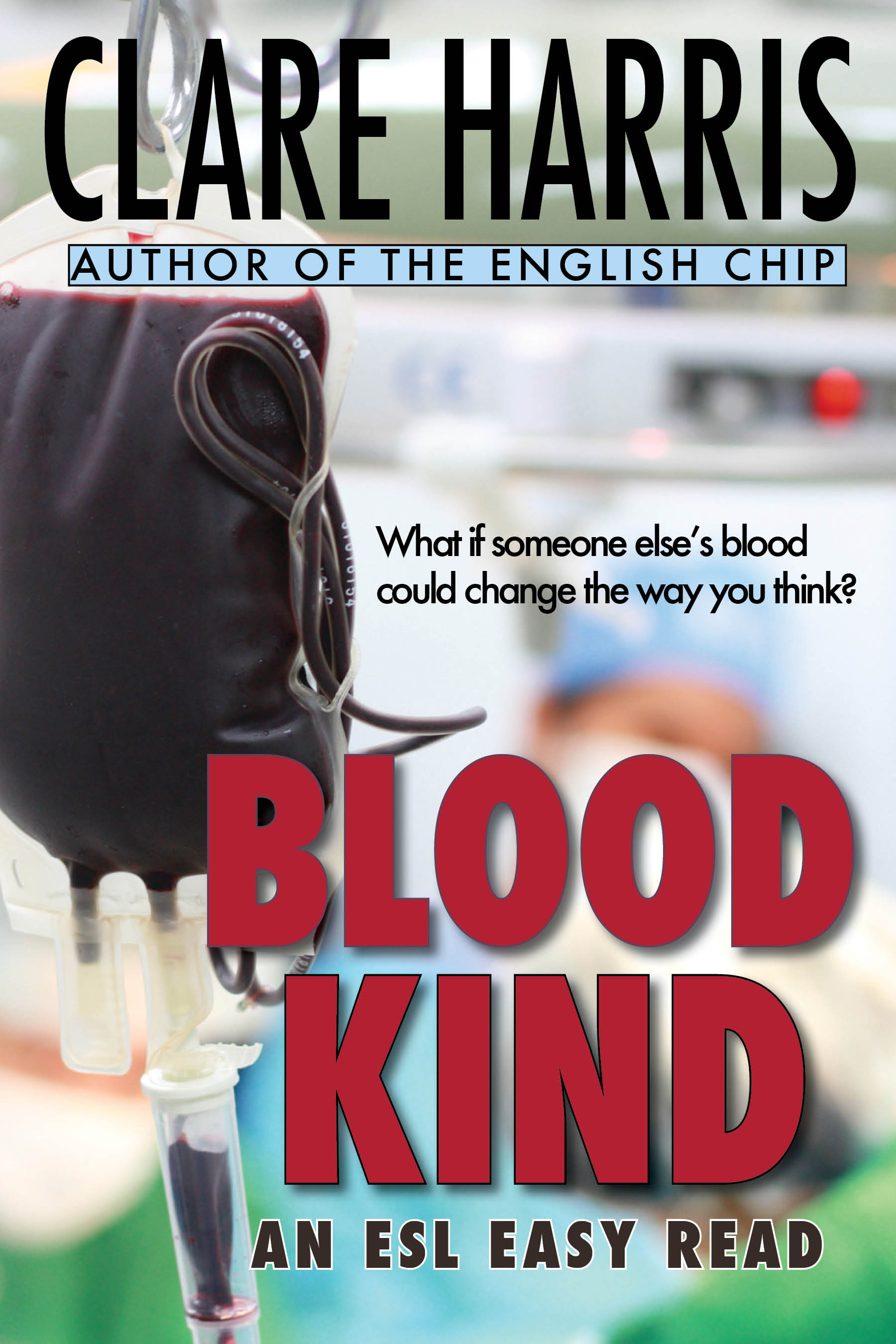When Victoria (Tori) Wilson invited me to join the ‘Trauma-informed adult TESOL International special interest group’ on LinkedIn, I knew I had to interview her, to find out more. I was not disappointed…this interview is long, but so worth your time.
Tori, what got you interested in this area?
I started teaching ELICOS at University of Southern Queensland (USQ) in 2014, and immediately had classes full of students from Iraq, Afghanistan, and South Sudan. Some were former refugees and some international students, but many had experienced traumatic events. A colleague mentioned to me that she thought a couple of students had PTSD because they were hyper-vigilant and very reactive. I had been diagnosed with PTSD myself a couple of years earlier, after living through the Great North-Eastern Earthquake in Fukushima, and the tsunami and nuclear disaster that followed.
When I started teaching again in Australia, I found that most of the ESL reading books had a unit on natural disasters. When I opened books to material like that I basically blacked out and wanted to run and hide, as well as feeling violently ill. It was not a state that was conducive to any kind of rational thought. So I put two and two together and realised that if certain things made me feel that way, certain materials or actions could be making some of my students react similarly.
I started researching it but could not find all that many answers. I especially could not find much evidence that privileged student voices. Sure, teachers and researchers could say what worked, but what about the students’ perspective? It was really missing. I got really into it and I had a mentor at USQ at the time who encouraged me to start a PhD in the field.
So you’re already super-busy… What made you set up this SIG?
I have been researching psychological trauma, PTSD, and pedagogies for five years now and have presented on trauma-informed ESL at various forums. I have a real passion for spreading the word. My PhD advisor at UQ actually suggested the special interest group.
I often think back to Cambodian students whose only language to express their trauma was, ‘I cannot learn. I think too much.’ How can we support learners like these?
Avoid information overload. Scaffold carefully and let students take their time, which I know is not always possible in the institutions we work for. Be encouraging and patient. Focus on small steps, small victories, and let them know when they have achieved any goal, large or small. Every lesson should have a few points where students can feel some satisfaction, to feel like they are making progress and are capable of making more. Of course, back up everything spoken with clear visuals.
Give breaks often, and make sure students feel they are welcome and loved in class. The learning material of course needs to be relevant and meaningful for their lives. They need to be able to connect with it, and it has to be interesting and engaging so that they have a greater chance of being absorbed in an activity. Learning games are often fun and helpful, especially when these are cooperative rather than competitive.
Of course, trauma isn’t necessarily something in the past…?
No, and that’s true on a couple of levels. First, when someone is experiencing post-traumatic stress responses, it is not just a bad memory. The body and brain react as if the original trauma were happening again.
Also, many of our students may be still living trauma. They could be subject to bullying, racist or religious-based abuse, domestic and/or sexual violence, poverty, of family breakdown and separations. We don’t always know the reality of some of our students’ lives. Some of the seemingly happiest students in my classes, who were always smiling, laughing, and joking, were suffering the most.
And then many of our students still have family back home or elsewhere who are in harm’s way. I can’t tell you the number of my students (both international and former refugees) who told me of family members and danger or who were killed while they (my students) were in Australia. Obviously it’s very hard to concentrate and be fully present in the classroom when that kind of thing is happening, but we can’t simply say, ‘Oh, come back later when everything’s fine.’ Things may never be fine, and we have a responsibility to provide a safe and caring learning environment where at least students don’t have an added layer of stress and fear.
How can we ensure that resources and activities are ‘safe’? What can we do when we inadvertently distress students?
Good question. Initially when I started researching this, I was more focused on teaching and learning materials. As well as focusing on disasters, many textbooks have stories of ‘survival and resilience’ which could be very triggering for some students. I remember one reading textbook that had a chapter about Afghan people and their experiences of the war and persecution. This was followed by a story about ‘the Lost Boys’ of Sudan, who were child soldiers. If I had taught this lesson in my classes, where many of my students had similar experiences, I could risk doing real damage. It’s fine if students bring up incidents in their past of their own volition, but to use their suffering as a reading or vocabulary exercise could trigger massive post-traumatic stress responses.
As for activities, it’s all about making sure everybody is treated with patience and care, made to feel truly welcome and that they belong. These things go a very long way with students. This also extends to other things most ESL teachers do (or should do) as a matter of course, like respecting the fact that our students are English language learners, and therefore need scaffolding and level-appropriate language. Not being able to understand or to be understood is not a feeling of comfort or safety, obviously.
When we inadvertently trigger students, the best thing to do is to recognise that and to say sorry, offer them time outside with a friend, a drink of water, a cup of tea, listen with respect and if applicable, offer a different task. I once had my students do presentations on people and events who had helped form their identities, because I had read that identity was very important for trauma survivors. This backfired with one student, who came to me in tears and said, ‘My life has been very short, and it’s been very sad.’ We talked and came up with an alternative assignment. Admitting you made a mistake and acknowledging a students’ pain, while working together to find a solution, can be very powerful.
It’s hard to control everything, like visiting speakers…
Yes, with visiting speakers and safety training, just the sound of alarms can be very triggering for many trauma survivors, myself included.
Also, seeing people in emergency services uniforms can be frightening for many, especially if they have come from repressive regimes. I attended a training session in Toowoomba run by MDA a few years ago, about working with refugees. The woman who ran it was Australian but she had worked in Chile for many years during the Pinochet regime. When she returned to Australia, she was walking down the street and saw a couple of police officers. She involuntarily ran to an alley and dropped to the ground, because her body and brain had become so accustomed to seeing anybody in a police uniform as a severe threat.
So if any emergency service people are introduced in class or around campus, it’s best to prepare students for this first and to explain that their role here is very different.
How can we stop taking yawns or lateness personally?
Another great question. I have seen this quite a bit, with teachers making assumptions and judgements about students. Don’t do it. We have no idea why they might be distracted, absent, often late, or sleeping in class. Apart from anything, PTSD tends to cause sleep problems.
The best thing is just to ask if they are OK. Students are surprisingly honest when they are suffering, especially if the question is asked in private or via email, and as long as the question is asked with love and care, rather than in a punitive way.
A couple of years ago I attended a workshop run by a pioneer in trauma-informed adult education, Dr Jenny Horsman from Canada. Many attendees came in late, in dribs and drabs. Jenny reacted with total compassion and genuine welcome, no matter how late they were. I try to be like that.
What can we do to support students?
Fortunately I think many, if not most, ESL teachers already treat their students with kindness and compassion. I realise that often they are very constrained by management in some institutions who can even frown on teachers taking a humanising approach.
It’s also important, as I said earlier, to provide scaffolding for learning, and to take a strength-based approach. These students we teach are amazing! They speak at least two but frequently multiple languages. They are living in a different culture, which is not easy to do. Many have endured and overcome obstacles that I can barely comprehend.
These are strong and incredible people, who are very intelligent. We have to always take the view that they are capable of learning and achieving, given the right learning environment and resources. Instead of assuming that they can’t do it, because of trauma or interrupted or limited education, let’s give them the tools and supports so that they can do it. Unfortunately I have seen too often educators damning students – especially those with a refugee background –with low expectations.
Truly listening and then acting on that information is essential. Just pretending to listen and saying, ‘I hear you’ and then disregarding everything they have said is useless. It’s no coincidence that not feeling heard is a major cause of amygdala hijack, which causes the brain to go into fight/flight/freeze mode.
Listening also means letting them speak! As we know, students’ talk time should be much higher than teacher talk time. We need to let them talk, not only so they can develop their English skills. It also helps students (everybody) feel valued, like they matter, and helps them to negotiate meaning. To have agency, you need to have a voice.
You’ve started a collection of links to resources on this subject. What could someone new to the area read, to get started?
I would start with these, even though they aren’t all about ESL specifically.
- Trauma and Adult Learning by Sandra Kerka – ERIC Digest no. 239, 2002. This is an excellent two-page overview.
- A Role for English Language Teachers in Trauma Healing by Michael Medley, TESOL Journal 3.1, March 2012
- Fear and Learning: Trauma-Relate Factors in the Adult Education Process by Bruce D. Perry, New Directions for Adult and Continuing Education, No. 110, Summer 2006.
- But I’m Not a Therapist: Furthering Discussion about Literacy Work with Survivors of Trauma by Jenny Horsman
What could we all read, to expand our awareness a little?
I always recommend the 2013 article The ADAPT Model: A conceptual framework for mental health and psychosocial programming in post conflict settings by Derrick Silove. Professor Silove is Emeritus Professor at UNSW and a psychiatrist who has worked extensively with refugees in various cultures. This article is reasonably short and highly readable.
For people wanting a whole book, I recommend the classic The Body Keeps the Score by Bessel van der Kolk.
Then there is the Judith Herman book, Trauma and Recovery, which is also a classic in the field. Her particular focus in women who have survived violence.
I also recommend anything by Dr Bruce Perry, who is both a neuroscientist and a psychiatrist. He co-wrote The Boy Who was Raised as a Dog and Born for Love with Maia Szalavitz. Dr Perry specialises in child trauma but the principles of connection hold true for adults too. Both Dr Perry and Dr van der Kolk have experienced significant trauma in their own lives.
What are your hopes for the future?
I hope trauma-informed teaching, or as I like to call it, human-informed teaching, becomes more mainstream. A lot of it seems obvious, and just common human decency, but it’s not always obvious to people. Many educators are also under pressure from dehumanising institutions which require a focus on surveillance, control, and accountability, so they are constrained from teaching as they would prefer.
I’ve often spoken at PD events where teachers have come up afterwards to thank me for making them feel validated. They had been made to feel by their own managers that humanising teaching practices were wrong. I hope this stops and educational managers listen to their teachers and students more.
I would also like people to become more aware of the crucial social aspects of trauma and recovery from trauma. My pet hate is when I see these educational ‘tools’ or packages based on self-regulation. Trauma is not something that mysteriously appears in people’s brains in a social vacuum, and it is not something that can be treated solely by an individualised approach. So when ‘self-regulation’ is touted as the answer, I get pretty annoyed.
This is a particularly Western, neoliberal model, which is based on the responsibilities of the individual, rather than seeing us as interconnected and interdependent. It’s something that we grow up in a country like Australia, and it is so ingrained that we don’t see it as ideological. ‘Don’t ask for help, don’t expect help, don’t burden others, don’t let others be a burden, be responsible for your own problems, be a strong and rugged individual.’ But that’s considered lunacy in many other cultures, and there is plenty of evidence to suggest that these beliefs are responsible for the epidemic of depression and anxiety in so-called advanced economies.
Bruce Perry used the term ‘biologically responsible’ to describe behaviour that forefronts human connection. I would like this idea – and the neuroscience behind it – to be more widely recognised and understood, instead of this popular idea that trauma-informed is just a touchy-feely idea that appeals to bleeding hearts and hippies. The bottom line is, if we don’t provide the proper environment for learning, who is going to learn?










10 responses to Trauma-informed adult TESOL: an interview with Tori Wilson
Incredible interview. So eye-opening.
Thanks, Carly – yes, so much food for thought here…Tori is quite amazing.
What a great person Tori is!
What a great human Tori is!
What a great teacher Tori is!
Yes!
Yes!
Yes!
Thanks for your comment, Hamzah! How true.
‘I hope trauma-informed teaching, or as I like to call it, human-informed teaching, becomes more mainstream. A lot of it seems obvious, and just common human decency, but it’s not always obvious to people. Many educators are also under pressure from dehumanising institutions which require a focus on surveillance, control, and accountability, so they are constrained from teaching as they would prefer.’
This is so true of many teacher’s experiences especially in recent years when the focus is entirely upon achievement that are deemed to translate into indication of teacher performance & capacity to meet standards. It is a failure of addressing student needs first & foremost.
Human-informed teaching sounds like what we all aspire to… but don’t always reach…yes, even if the institution has good intentions, it’s part of a system… and yes, teachers all feel that failure.
Hi Tori,
Having read this , I am so proud of you, 7 of the help you give to so many people.. You are wonderful!
I’m going to direct Tori to your comment, Alan – and I totally agree! (Clare)
Thanks Tori and Clare, this is a great interview! It resonates so much for someone who has worked in TESOL for a long time. Thanks for the suggested readings – I will definitely look them up.
Thanks so much on Tori’s behalf, Robert! I got so much from it too.
Comments are closed.